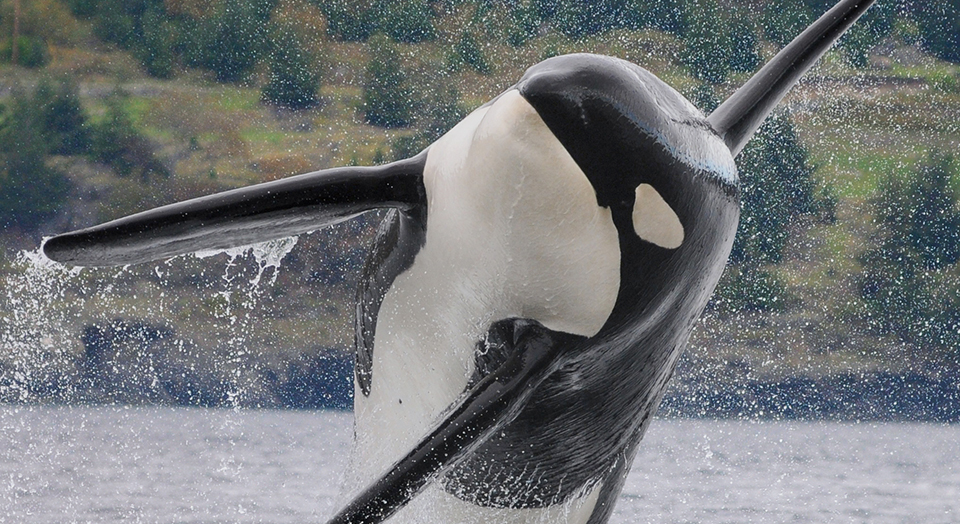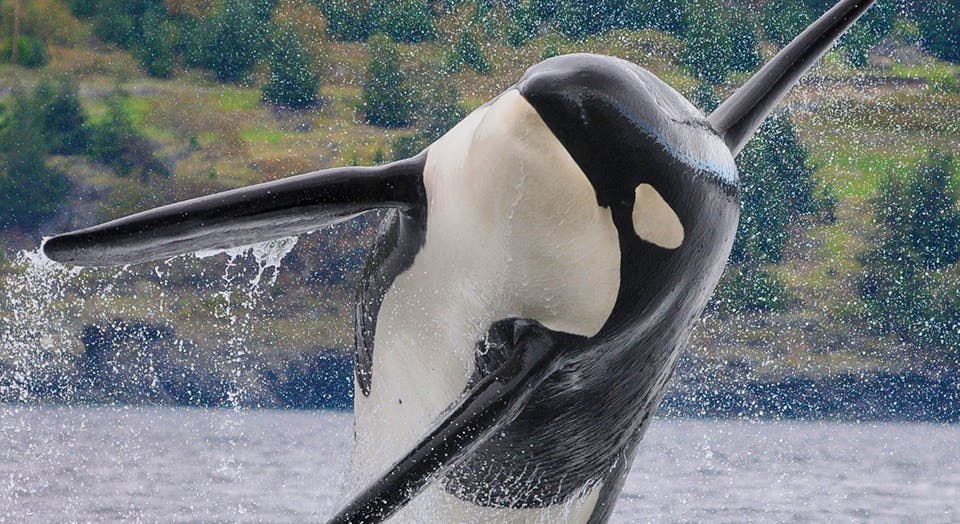While debates over dams continue, spillways provide solutions
 What’s good—or bad—for salmon in the Pacific Northwest also has an impact on orcas—which dine almost exclusively on chinook.
What’s good—or bad—for salmon in the Pacific Northwest also has an impact on orcas—which dine almost exclusively on chinook.
Every winter, endangered southern resident orcas gather at the mouth of the Columbia River, hoping to gorge on chinook. But for about 80 years, eight federal dams have blocked salmon runs along the lower Snake and lower Columbia rivers, making it difficult for adult salmon to move upstream to spawn and for juvenile salmon to make their way back to the ocean.
As salmon struggle and orcas starve, dam removal has been debated for decades.
Enter an immediate solution: “spillways.” Rather than sending salmon through dangerous turbines and strenuous dam bypass systems, water is spilled over the tops of dams in spring. This more closely mimics the natural river flow and moves migrating juvenile salmon past the dams quickly and safely.
“This means more salmon will one day return to spawn,” says Robb Krehbiel, Defenders’ Northwest representative. Scientific research since the mid-1990s demonstrates that additional spill significantly increases the number of adults that return.
“The Columbia River Basin once produced more salmon than any other place on the planet,” says Krehbiel. “Now the dams here are the largest source of human-caused salmon mortality.”
Dam operators and energy companies generally oppose voluntary spillways because they reduce energy production and revenue. “But with the southern resident orca population at a 30-year low and only 76 individuals remaining, their survival and recovery depends on rebuilding the chinook populations,” says Krehbiel.
Spill levels are legally limited by state water-quality standards because the cascading water mixes in gas bubbles from the air and increases the amount of dissolved gases in the water. High levels of gas can harm juvenile salmon.
But research has shown that salmon can handle dissolved gases at levels up to 10 percent higher than scientists initially thought.
“In fact, by avoiding dam turbines and arriving at the ocean more quickly, salmon survival increases,” Krehbiel says.
By increasing allowable levels of dissolved gases in the Columbia and Snake rivers, Oregon and Washington can provide more spill as early as 2019.
The governors of Oregon and Washington have expressed their support, and Defenders is pushing the states to develop consistent standards that allow as much spill as possible as soon as possible.
In January, a federal judge ordered the U.S. Army Corps of Engineers to increase spill at all eight dams in April, but the increase is not permanent.
Orcas face other problems, including toxic chemicals in the water. “But most worrisome is this lack of food,” says Krehbiel. “Orcas have a chance if we can boost juvenile salmon survival. Increasing spill is simple and something we can do today to ensure these species are around tomorrow.”
Only select articles from Defenders are available online. To receive 4 issues annually of the full award-winning magazine, become a member of Defenders of Wildlife!




